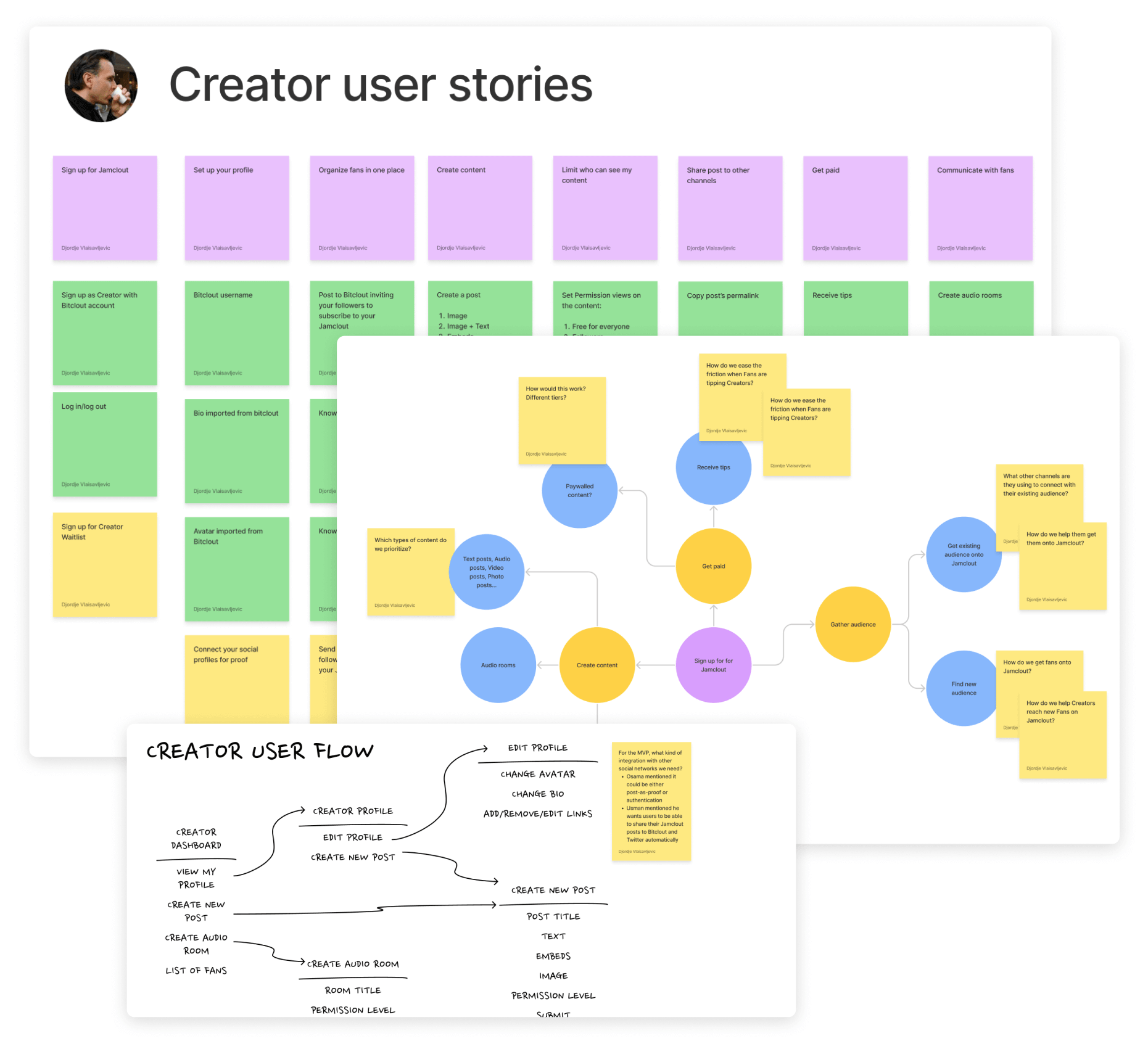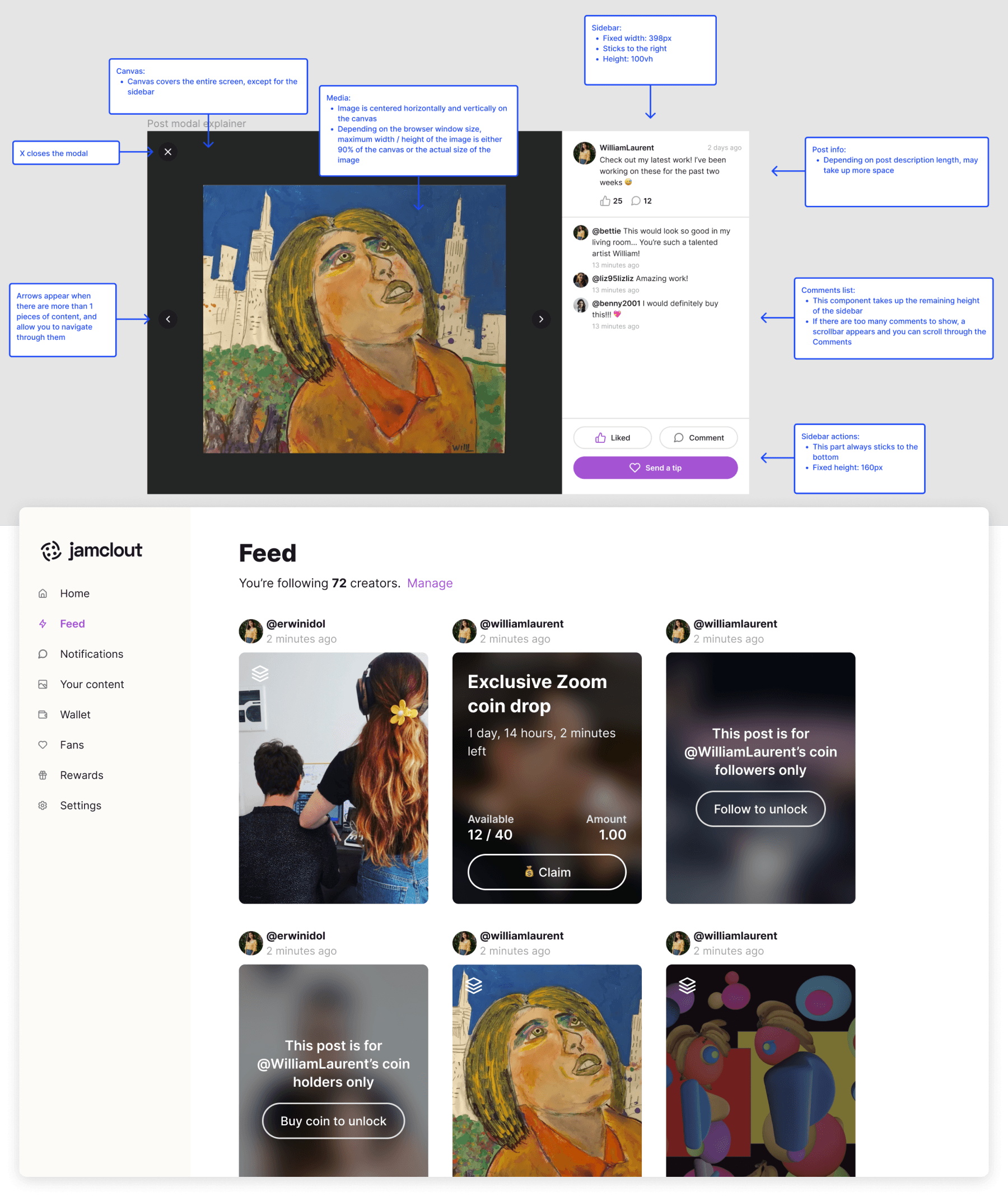Jamclout started as a simple, fun experiment: Clubhouse clone with a crypto spin. It was obvious from the start this idea doesn’t have what it takes, but one useful thing was that it put us in touch with a bunch of creators hanging out on Bitclout social network, so we had a chance to figure out what they really need instead.
What we found out:
- Visual creators like designers, illustrators and painters had a problem with Bitclout: it’s just wasn’t visual enough to showcase their content.
- They wanted to make a living through their content, but it was hard for them to get to that point through currently available crypto social networks.
- They wanted to attract new fans and thank their loyal fans, but their current methods took a lot of manual work
So for the MVP, we wanted to focus on that persona: William, an artist interested in crypto, with a considerable following on Bitclout but not big or loyal enough he could make a living off it.
Shaping the product
We defined the initial goals we wanted to help them achieve:
- Attracting new fans and turning existing fans into super-fans
- Showcasing their content in all its glory
- Getting paid in crypto
On the fan side, the goals were to stay up-to-date with the creator’s exclusive content, support them and even invest in them if you believe in them enough.
I ran a series of workshops with founders, domain experts and developers, ranging from casual chats to user story mapping sessions, where we together tried to figure out how to help the creators achieve these goals while addressing the pain points they mentioned.

Input from developers was especially important here since we were relying on the existing Bitclout and Rally APIs for a lot of functionality so it was crucial we know how tricky would a certain implementation be.
User flows and wireframes
I used a simple PRD, rough wireframes and user flows to try to get more feedback from devs and QA, making sure everything’s technically possible, that we’re all on the same page and we’re not missing any edge cases. That meant backend could start doing their work while me and frontend folks figured out the visuals and interactions.
I also explored how other products are solving these problems. What’s their terminology? How do they represent certain concepts visually? Why they use certain user flows?

After that, I took the screens into higher fidelity, creating a simple, friendly-looking UI and making use of Figma components to standardize the UI right from the start. This level of fidelity allowed me to create Figma prototypes which we used for:
- Usability tests for key user flows, which helped us improve them and in some cases even change the names of certain features so it would make more sense to users
- Demos for potential investors and partners, which helped us get attention early on
There were some tricky challenges here:
Setting the creator up for success
We knew that an empty profile is a big turn-off for both the creator and their fans, so we already populated some of it with the data from their Bitclout and Rally profiles. Then we gave them suggested steps to prepare their profile so the fans have a reason to be excited once they land on it. We even prepared a nice announcement message they can use to bring their current fans to Jamclout!

Keeping it consistent
Another challenge was different types of content. Creators could share their images, gifs, videos, NFTs, coin drops… I had to make sure the feed makes it easy to quickly skim through all these different content types and that the viewing experience is consistent and smooth no matter what’s the media type. There are always so many edge cases when you’re dealing with user-generated content, and it was my job to make sure their content looks great no matter what they do.

Lessons & outcomes
Jamclout already received an investment from Rally and formed partnerships with several artist incubators, whose members will be the first ones to start using the app in December during our closed beta.
Working on Jamclout I’ve learned a lot about crypto and different weird new ways creators earn their living. I’m still skeptical when it comes to claims that crypto will be a “revolution” and I have ecological concerns, but this project also helped me hear the arguments from the other side.

